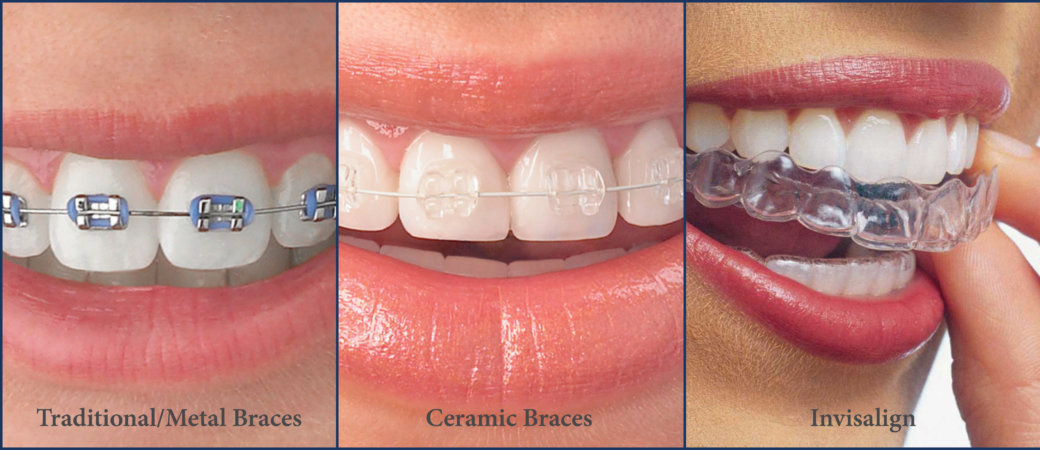Not known Details About Causey Orthodontics
Table of ContentsCausey Orthodontics - QuestionsCausey Orthodontics for Beginners5 Easy Facts About Causey Orthodontics ShownSome Known Questions About Causey Orthodontics.Unknown Facts About Causey Orthodontics
Ignoring occlusal relationships, it was typical to eliminate teeth for a variety of oral concerns, such as malalignment or overcrowding. The concept of an intact teeth was not commonly appreciated in those days, making bite connections seem unnecessary. In the late 1800s, the concept of occlusion was essential for producing trustworthy prosthetic replacement teeth.As these principles of prosthetic occlusion advanced, it ended up being an invaluable tool for dentistry. It was in 1890 that the job and effect of Dr. Edwards H. Angle began to be really felt, with his payment to contemporary orthodontics particularly notable. Originally concentrated on prosthodontics, he educated in Pennsylvania and Minnesota before guiding his attention towards oral occlusion and the therapies required to keep it as a normal problem, thus coming to be called the "daddy of contemporary orthodontics".

The concept of optimal occlusion, as proposed by Angle and included right into a classification system, made it possible for a change towards dealing with malocclusion, which is any kind of discrepancy from typical occlusion. Having a full set of teeth on both arches was extremely searched for in orthodontic treatment as a result of the need for specific partnerships between them.
The Best Strategy To Use For Causey Orthodontics
As occlusion came to be the key priority, face proportions and visual appeals were overlooked - orthodontist services. To achieve excellent occlusals without using exterior pressures, Angle proposed that having perfect occlusion was the very best means to get optimum face looks. With the passing of time, it came to be fairly noticeable that even a remarkable occlusion was not ideal when thought about from a visual viewpoint
Charles Tweed in America and Raymond Begg in Australia (that both researched under Angle) re-introduced dentistry removal right into orthodontics during the 1940s and 1950s so they can enhance face esthetics while additionally making sure far better stability worrying occlusal relationships. In the postwar period, cephalometric radiography begun to be utilized by orthodontists for gauging changes in tooth and jaw position brought on by growth and treatment. It ended up being noticeable that orthodontic treatment might readjust mandibular development, causing the development of practical jaw orthopedics in Europe and extraoral pressure steps in the United States. These days, both functional home appliances and extraoral gadgets are used around the globe with the purpose of changing growth patterns and types. Subsequently, going after true, or at least boosted, jaw partnerships had come to be the major purpose of therapy by the mid-20th century.
8 Simple Techniques For Causey Orthodontics
 The American Journal of Orthodontics was produced for this function in 1915; prior to it, there were no scientific goals to adhere to, nor any type of exact category system and brackets that did not have functions. Up until the mid-1970s, dental braces were made by covering steel around each tooth. With improvements in adhesives, it came to be feasible to rather bond metal brackets to the teeth.
The American Journal of Orthodontics was produced for this function in 1915; prior to it, there were no scientific goals to adhere to, nor any type of exact category system and brackets that did not have functions. Up until the mid-1970s, dental braces were made by covering steel around each tooth. With improvements in adhesives, it came to be feasible to rather bond metal brackets to the teeth.Andrews provided an informative interpretation of the optimal occlusion in irreversible teeth. This has actually had significant results on orthodontic treatments that are carried out frequently, and these are: 1. Right interarchal connections 2. Proper crown angulation (pointer) 3. Appropriate crown inclination (torque) 4. No turnings 5. Tight contact factors 6. Apartment Curve of Spee (0.02.5 mm), and based upon these principles, he discovered a therapy system called the straight-wire device system, or the pre-adjusted edgewise system.
The advantage of the layout depends on its bracket and archwire combination, which needs just very little cable flexing from the orthodontist or clinician (orthodontist near me). It's aptly named after this attribute: the angle of the slot and thickness of the bracket base inevitably identify where each tooth is situated with little requirement for additional control
Some Of Causey Orthodontics
Both of these systems employed the same brackets for each and every tooth and demanded the bending of an archwire in 3 airplanes for locating teeth in their preferred placements, with these bends determining best positionings. When it involves orthodontic appliances, they are separated right into two types: detachable and taken care of. Removable home appliances can be taken on and off by the patient as required.

Therefore, mostly all modern set home appliances can be considered variations on this edgewise device system. Early 20th-century orthodontist Edward Angle made a major payment to the world of dental care. He created 4 distinctive device systems that have been utilized as the basis for numerous orthodontic treatments today, preventing a few exceptions.
What Does Causey Orthodontics Mean?

The cable finished in a string, and to move it forward, an adjustable nut was made use of, which enabled for a rise in circumference. By ligation, each private tooth was affixed to this expansive archwire (family orthodontics). Due to its restricted series of movement, Angle was unable to attain accurate tooth placing with an E-arch
These tubes held a soldered pin, which can be repositioned at each visit in order to relocate them in location. Called the "bone-growing home appliance", this gizmo was thought to urge much healthier bone growth due to its potential for transferring pressure directly to the roots. Nonetheless, executing it proved troublesome actually.
Comments on “The Ultimate Guide To Causey Orthodontics”